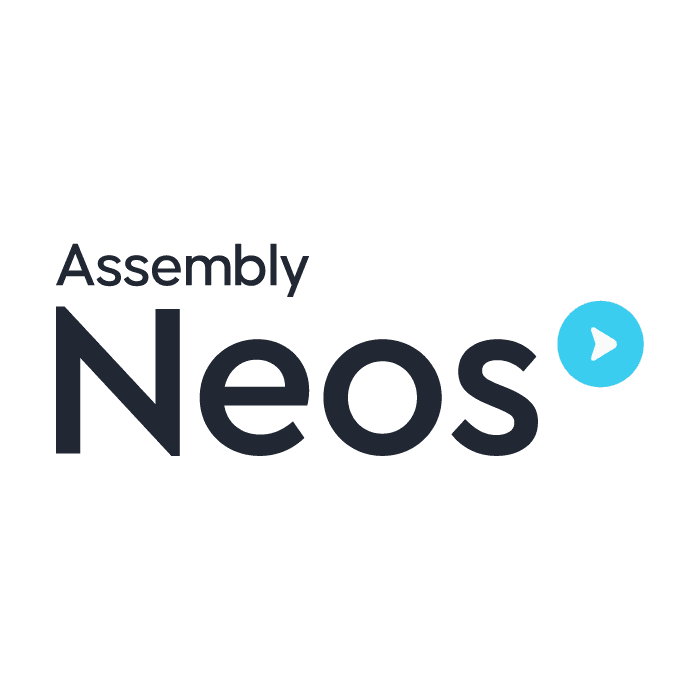Announcing timekeeping, billing, and payments on Filevine
Leading legal platform, Filevine, recently announced the launch of end-to-end timekeeping, billing and payments, enabling customers to track time, bill their clients, and receive payments easily and securely within the Filevine platform. The release rounds out Filevine's robust suite of natively-built legal solutions and meets the needs of the growing number of non-contingency firms looking to Filevine to optimize their legal operations. Learn more about Filevine's latest capabilities here: https://www.filevine.com/platform/billing-and-time-keeping/.
Transcript
Bob Ambrogi (00:03.107) Welcome to Law Next PR, the podcast where we put a spotlight on the latest news coming out of the legal tech industry. This is Bob Ambrogi and in each sponsored episode of Law Next PR, I interview a legal tech company about its just released news. My guest today is Michael Anderson, Executive Vice President of Product at Filevine, who's here to talk about Filevine's launch of end-to-end legal timekeeping, billing, and payments. Michael, welcome to the show.
Michael Anderson (00:30.67) Thank you so much, Bob. Yeah, thank you so much, Bob. Thanks for having me.
Bob Ambrogi (00:35.303) Good to see you. So let's start with the basics before we get to the news. Tell us a little bit about Filevine and what you do.
Michael Anderson (00:42.006) Yeah, sure thing. So Filevine, for those that don't know, is a all-in-one document management, case management, and timekeeping and billing platform. So kind of the core operational platform for law firms and legal offices is what Filevine is. I am the executive vice president of products. I've been with Filevine since the early years and love solving problems for legal professionals and giving them the tools they need.
Bob Ambrogi (01:11.223) And who is the target user for Filevine? What types of legal professionals and practices is Filevine best suited for?
Michael Anderson (01:22.026) Yeah, that's a great question and definitely relevant to this press release that we just had a couple weeks ago. So I would say that what Filevine is best suited for is for law firms whose clients are people. They're individual consumers. Many of our customers also face companies. But what we really wanted to do in bringing case management, doc management, timekeeping and billing altogether is to
be able to be the easy answer and the easy choice for law firms that, again, face individual consumers, they face people who, folks that have legal needs and they bring those legal needs to customers. So, I can talk a lot about this, but high level, that's what I would say we're particularly good at. We're getting better and better at law firms that face companies and other entities, but I would say that we intend to be the best choice.
for law firms that face consumers.
Bob Ambrogi (02:24.879) So the recent announcement that you made includes the launch of payments by Filevine as the capstone to kind of your broader time and billing capabilities in the platform. So give us the details. What is it that you've announced and why does it matter for your users?
Michael Anderson (02:35.336) Mm-hmm.
Michael Anderson (02:45.226) Yeah, it's a great question. So what we launched was we wanted to basically support the entire billing cycle for a firm that does hourly fee agreements or retainer fee agreements or even flat fee agreements to be able to manage the entire billing cycle from the time where those initial billing items are created, either the fees or the entries of the expenses, all the way to when they get put on a
pre-bill, when that pre-bill gets reviewed, how it gets distributed, is it done in batch, is it done individually, and then how those get paid. Are you automatically drawing down from a retainer? Are you sending those out to be paid over email? What payment options can you do that are native to the system? That was the big end-to-end cycle is what we were after, and that's what we released. Why is it significant for...
for our potential customers, our current customers for Filevine. So it's significant for a few reasons. One is, I will talk about Filevine history, and two, I will talk about trends that we see in the market. So one, Filevine history, Filevine was started by three founders. Two of them were contingency fee attorneys. And so we prided ourselves and loved that history of being able to provide operational efficiency
to attorneys and legal professionals that work in contingency fees. They're actually naturally incentivized to care about internal efficiency. And it's been a great relationship. Over time, I would say that our customers, and this is kind of where I'll get into the market dynamics here, is that our customers have pushed us in this direction as we've tried to better solve their needs. Is that we started realizing, hey,
This was over many years, but law firms are often composite. Sometimes they are dealing in contingency fee agreements, but then they may have a department that does an hourly billing agreement or a retainer agreement. And we recognize that pretty much any time a law firm buys a core system like this, it's the result of a long negotiation of internal groups. And those groups have different interests. They have different needs.
Michael Anderson (05:09.634) We didn't want the purchase of our platform and the adoption of our platform to be a loss for really anybody at the firm. We wanted it to be a win for everybody. And so even though Filevine's kind of founding in history had a concentration of contingency of customers, we quickly realized that those contingency customers often engaged in less common fee agreements, sometimes even just one-offs, and they wanted to know, hey,
how would we put this inside of Filevine? So that got us started, that got us iterating on these solutions, and then we, of course, realized that this is huge, and it's nothing groundbreaking. This technology has been in legal for a long time, but we didn't want to just do case management well, and document management well, we also wanted to do timekeeping and billing well. So that's what I would say, it's significant for us as Filevine and significant for...
law firms that want to engage in multiple agreement types and want to have a one-stop shop to do that.
Bob Ambrogi (06:11.523) Yeah. And when you bring in the payments, the electronic payments aspect to it, how does that work? I mean, explain a little bit more about how that serves as sort of the capstone to what you've been building here in terms of this process.
Michael Anderson (06:21.324) Yeah.
Sure. Yeah, sure. Well, electronic payments are nothing new. E-payments have been around for a long time, right? So this isn't any sort of groundbreaking technology. I sometimes liken it to, it used to be a really big deal to store a document in the cloud. It is no longer a big deal to store a document in the cloud. But what you can add,
And if I liken it to what we did in document management in years past, is what you can add is you can add an embedded workflow experience, a great user experience, that when they're in the context of their client matter, they're also using documents in the same way, right? It's taking a kind of commoditized capability, which is being able to process an e-payment and then embedding it inside of that billing admin's workflow.
whether they're going through their monthly billing run or something like that, it is very time intensive and costly to go through that entire workflow, even if it's enabled by batch billing tools and things like that, and then to go hunt down all of the payments. And so for us, the reason to do payments and the reason to do it natively and not just integrate with an existing payment app is because we wanted to...
add that embedded workflow experience in a way that we could only do it because it's native.
Bob Ambrogi (07:49.891) And you know, it's interesting you say that, you know, e-payments have been around for a while, which they have, but it certainly seems to me, and from what I've seen across the industry, to be the case that electronic payments have become almost a must have over the last couple of years. I mean, especially during the pandemic and in the wake of the pandemic, our clients' expectations around electronic payments and firms' expectations around that have changed dramatically, I think. Do you see that?
Michael Anderson (08:08.529) Bye.
Michael Anderson (08:19.158) Right, yes, absolutely. Now, definitely through the pandemic, you want to be able to send out, again, especially if you're an end client as a consumer that has a cell phone, you want to be able to send out your bill for them to see it on their phone and be able to tap and make a payment. And yes, the kind of mobile experience, the remote experience that we've become accustomed to in recent years is definitely part of the need to do this. And I mean, you know, I've definitely been in
I'm familiar with corporate finance situations in which checks are coming in the door, they're coming in the mail, someone's got to go take them to the bank and deposit them, right? There's no charge in doing that, but there is no kind of hard cost in doing that, but there is a soft cost in doing that, and it's someone's time and you can lose a check. And so, yes, it is, while the electronic payments haven't, they're somewhat new in kind of broad history.
They solve a big problem. They solve a big problem in reducing that internal administrative overhead of getting all the payments in the door or getting them applied to where they need to be applied, either to invoices or going into a trust account as a replenishment payment or what have you.
Bob Ambrogi (09:37.455) Yeah. What about retainer? Well, you just alluded to replenishments. How do you handle that? How do you handle retainer agreements, retainer deposits and replenishments through this process?
Michael Anderson (09:52.746) Yep, great question. So we have inside of Filevine itself. So inside of your client matter, you have among the other things that you're tracking correspondence, your documents, you have a section that is nested inside of your client matter and Filevine, where you can see all of if you're, if you're hourly based, you'd be able to see your time entries, you'd be able to see the historical log of your invoices. But then there's another tab, or you can track your trust balances. And so
That, if you were using payments with Filevine, you have a payment come in to a trust designated account. We do the work of taking the actual transaction fee and not charging it to that trust account to be trust compliant. And then that would go into your trust log inside of Filevine. And so you have like a client specific trust log that's tracked native inside the application.
typically a billing admin for firms that we see, they're often cash basis. And so what we see is someone's tracking those by client matter and invoicing against those balances. And that at the end of a billing cycle, there's some report that's run that says, here are all the draws that have been made for all of the client matters. And you're gonna take the aggregate of that, that's gonna be your accountant's backup for an actual bank account to bank account transfer.
So that's how we handle it in Filevine today, but it is inside the context of the client matter with everything else that you're working on.
Bob Ambrogi (11:29.283) If I'm a Filevine customer now, are these features all available to me, or what's the availability across your customers?
Michael Anderson (11:38.678) Yeah, great question. So if you're a FileMine customer now, yes, they are all available to you. The only cost that you would incur is that if you adopt our FileMine payments for all of this workflow automation is that we would charge a transaction fee. Our transaction fees are competitive in the market. I think it's for credit cards and debit cards, 2.94%. And...
Amex is particularly high as is common. And but one other thing, and then ACH, I think is $2 per transaction. So we've got those listed out, but we intend to be very competitive. But just the login is no charge at all, the ability. And then if you are existing, so again, going to my example of the trend that we're seeing is.
especially consumer firms, and it's anecdotal. I'd love to sink my teeth into some deep analysis on this, but anecdotally we see a lot of, say, personal injury firms expanding into family law, or family law firms getting into bankruptcy, or things like that. And so if you are in that first example of your personal injury and you use file money today and you're like, you know what?
We get requests from these clients that we build trust with and handling their Their accidents or some other situation The you know you have the ability to say Oh, you know we don't have to adopt an entire other system We can handle a different fee agreement instead of file line if we've hired the staff to do it so And that doesn't require you to kind of purchase anything else inside a file line. You can get the file line billing
end-to-end module for free that includes the ability to take in those e-payments, but we do charge that transaction fee.
Bob Ambrogi (13:35.715) Yeah. And something I meant to ask earlier actually is what is the client experience here around payments? So you've sent out an invoice and I assume it has an e-payment link in it or something like that. What's the client experience?
Michael Anderson (13:45.174) Yep. Yeah, the client experiences they would get, so let's say the example of someone sending out invoices that the law firm just intends to pay. They intend to have the money go directly into their operating account. So a non-retainer situation. Let's say you're sending out those invoices. Each of those invoices sent, they can be bulk sent. So the billing admin is sending out those. They can get a receipt for themselves.
And then on the client side, they're getting the email with the template attached, the invoice template attached, filled out with all of the relevant billing items. And then below that, they get a message that they can click to pay online. They click to pay that. They fill out the invoice information is automatically put in there so they don't need to enter a total or anything. And they fill out that information and they can save that personal information if they do.
there's some terms and conditions that have to apply, they have to agree to. So if they're going to be processing multiple e-payments, they don't have to keep filling that out. So if they choose to do that, and then they would literally click on the link and just press pay, but if they're doing it for the first time, they fill out and then press pay.
Bob Ambrogi (15:01.231) Michael, anything else that you would like listeners to know about time billing and payments by Filevine?
Michael Anderson (15:08.554) Yeah, just that we are really committed to, like I said at the beginning here, be the answer for law firms that are looking to, that have consumers and individuals as their clients, and they're looking to expand and handle more practice areas, handle more fee agreement types. We believe at Filevine that really legal professionals
as much as they're choosing practice areas, they're choosing clients and developing relationship with those clients. And so again, like I've emphasized is that we want Filevine to be the easy answer for anybody that is looking to engage with their clients in more than one way. That's what I would just emphasize overall.
Bob Ambrogi (15:59.239) Well, thanks so much for coming on the show today and telling us all about this news. Really interesting stuff.
Michael Anderson (16:06.27) Hey, appreciate it, Bob. Thanks for your time.
Bob Ambrogi (16:10.447) That's it for today's episode. If you enjoyed it, please look for us wherever you get your podcasts. We're also at lawnext.com. All of our recordings are available there. And we're also on YouTube at Lawnext PR. Hope you'll subscribe and listen. Thanks for listening today. This is Bob Ambrogi. Until next time.






